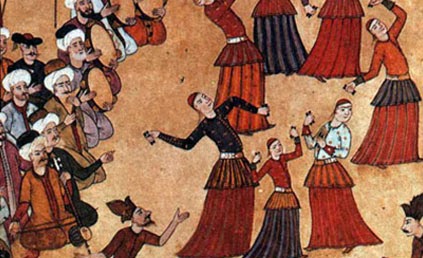Mavi Boncuk |
Ottoman Political Parties
FEDAİLER CEMİYETİ 1859, İstanbul
Leader: Süleymaniyeli Şeyh Ahmet
General Secretary: Didon Arif Bey,
Members:Hüseyin Daim Paşa, Binbaşı Rasim Bey, Cafer Dem Paşa, Tophane Müftüsü Bekir Efendi, Kütahyalı Şeyh İsmail, Hoca Nasuh Efendi, Tophane Mızıka Başçavuşu Erzurumlu Mehmed, Hezergradlı Şeyh Feyzullah Efendi, Kütahyalı Şeyh İsmail
YENİ OSMANLILAR CEMİYETİ 1865, İstanbul
Leader: Mustafa Fazıl Paşa
Founders: Namık Kemal, Kayazade Reşat, Menapirzade Nuri, Sagır Ahmet Beyzade Mehmet, Mir’at Mecmuası sahibi Refik, Suphi Paşazade Ayetullah
Other Members:Ziya Paşa, Ali Suavi, Agah Efendi, Ebüzziya Tevfik...
ALİ SUAVİ (ÜSKÜDAR) KOMİTESİ 1878, İstanbul
Founders: Ali Suavi, Süleyman Asaf Sopasalan, Hafız Nuri, Hasköylü Hacı Ahmet, Mehmet İzzet Paşazade Süleyman, Bağdatlı Süleyman, Üsküdarlı Nuri, Filibeli Ahmet Paşa, Arnavut Salih, Hacı Ahmet, Molla Mustafa
KLEANTİ SKALYERİAZİZ BEY KOMİTESİ 1878, İstanbul
Leader: Kleanti Skalyeri
Members: Nakşibend kalfa, Aziz Bey, Ali Şefkari Bey, Tabib Agah Bey
OSMANLI İTTİHAD VE TERAKKİ CEMİYETİ 1889, İstanbul 1918 İstanbul.
General Director Ali Rüştü
Founding Members:İbrahim Temo, Abdullah Cevdet, İshak Sükuti, Mehmed Reşid, Hüseyinzade Ali
Paris Branch (1889)
General Director Ahmet Dıza Bey,
Directors: Mehmet Ali Paşa, Recep Fuat, Nihat, Dr.Nazım, Bahaddin Şakir, Sami Paşazade Sezai, Alber Fua
Cenevre Branch (1897)
Founders: Dr.İshak Sükuti, Abdullah Cevdet, Ethem Ruhi (Balkan), Tıbbiyeli Mustafa Ragıp, Esat, Mithat Şükrü (Bleda), Ahmet, Mizancı Murat, Tunalı Hilmi, Seraceddin, Dr. Hasan, Lütfi, Dr. Akil Muhtar (Özden), Nuri Ahmet, Reşit Beyler
Kahire Branch (1897)
Founders: İshak Sükuti, Tunalı Hilmi, Hoca Kadri, Salih Cemal, Ali Ziya, Ferit (Tek)
Selanik Branch (1908)
General Director Talat Bey (Paşa)
Directors: Hüseyin Kadri, Mithat Şükrü (Bleda), Hayri, Ahmet Rıza, Enver (Paşa), Habib, İpekli Hafız İbrahim Beyler
İTTİHADI OSMANİ CEMİYETİ 1889
TEŞEBBÜSİ ŞAHSİ VE ADEMİ MERKEZİYET CEMİYETİ 1902, Paris
General Director Prens Sabahattin
Founders and Members:Ahmet Fazlı (Genel Sekreter), İsmail Kemal, Dr. Nihat Reşat (Belger), Dr. Rıfat, Miralay Zeki, Dr. Sabri, Hüseyin Tosun, Milaslı Asker Murat, Şair Hüseyin Siret.
OSMANLI İTTİHAD VE İNKILAP CEMİYETİ 1904, Cenevre
Founders: Ethem Ruhi Balkan, Dr. Abdullah Cevdet, Varnalı Kamil, Tarsusizade Münir, Mehmet Cemil
CEMİYETİ İNKILABİYE 1904
Founders: Hamid, Satvet Lütfi (Tozan), Namık Zeki, Ferit Necdet Mübin, Dr. Mahmud, Köprülü Hamdi, Mustafa Asım, Nafi Atuf (Kansu), Vehbi Semuh
OSMANLI HÜRRİYET CEMİYETİ 1906 Selanik
Founders: İsmail Canbulat, Mithat Şükrü, Bursalı Tahir, Yüzbaşı Naki, Talat Bey, Rahmi , Ömer Naci, Kazım Nami, İsmail Hakkı, Süleyman Fehmi
VATAN VE HÜRRİYET CEMİYETİ 1906 Şam
Founders: Dr. Mustafa Cantekin, Binbaşı Lütfi, Mustafa Kemal, Lütfi Müfit Özdeş
Islahatı Esâsîyei Osmaniye Fırkası (1909)
Osmanlı Demokrat Fırkası Fırkayı İbad (16 Şubat 1909)
İttihadı Muhammedi Fırkası” (5 Nisan 1909)
Mutedil Hürriyet perveran Fırkası (Kasım 1909)
Ahali Fırkası” (21 Şubat 1910)
Osmanlı Sosyalist Fırkası” (1910)
Ottoman Political Parties
FEDAİLER CEMİYETİ 1859, İstanbul
Leader: Süleymaniyeli Şeyh Ahmet
General Secretary: Didon Arif Bey,
Members:Hüseyin Daim Paşa, Binbaşı Rasim Bey, Cafer Dem Paşa, Tophane Müftüsü Bekir Efendi, Kütahyalı Şeyh İsmail, Hoca Nasuh Efendi, Tophane Mızıka Başçavuşu Erzurumlu Mehmed, Hezergradlı Şeyh Feyzullah Efendi, Kütahyalı Şeyh İsmail
YENİ OSMANLILAR CEMİYETİ 1865, İstanbul
Leader: Mustafa Fazıl Paşa
Founders: Namık Kemal, Kayazade Reşat, Menapirzade Nuri, Sagır Ahmet Beyzade Mehmet, Mir’at Mecmuası sahibi Refik, Suphi Paşazade Ayetullah
Other Members:Ziya Paşa, Ali Suavi, Agah Efendi, Ebüzziya Tevfik...
ALİ SUAVİ (ÜSKÜDAR) KOMİTESİ 1878, İstanbul
Founders: Ali Suavi, Süleyman Asaf Sopasalan, Hafız Nuri, Hasköylü Hacı Ahmet, Mehmet İzzet Paşazade Süleyman, Bağdatlı Süleyman, Üsküdarlı Nuri, Filibeli Ahmet Paşa, Arnavut Salih, Hacı Ahmet, Molla Mustafa
KLEANTİ SKALYERİAZİZ BEY KOMİTESİ 1878, İstanbul
Leader: Kleanti Skalyeri
Members: Nakşibend kalfa, Aziz Bey, Ali Şefkari Bey, Tabib Agah Bey
OSMANLI İTTİHAD VE TERAKKİ CEMİYETİ 1889, İstanbul 1918 İstanbul.
General Director Ali Rüştü
Founding Members:İbrahim Temo, Abdullah Cevdet, İshak Sükuti, Mehmed Reşid, Hüseyinzade Ali
Paris Branch (1889)
General Director Ahmet Dıza Bey,
Directors: Mehmet Ali Paşa, Recep Fuat, Nihat, Dr.Nazım, Bahaddin Şakir, Sami Paşazade Sezai, Alber Fua
Cenevre Branch (1897)
Founders: Dr.İshak Sükuti, Abdullah Cevdet, Ethem Ruhi (Balkan), Tıbbiyeli Mustafa Ragıp, Esat, Mithat Şükrü (Bleda), Ahmet, Mizancı Murat, Tunalı Hilmi, Seraceddin, Dr. Hasan, Lütfi, Dr. Akil Muhtar (Özden), Nuri Ahmet, Reşit Beyler
Kahire Branch (1897)
Founders: İshak Sükuti, Tunalı Hilmi, Hoca Kadri, Salih Cemal, Ali Ziya, Ferit (Tek)
Selanik Branch (1908)
General Director Talat Bey (Paşa)
Directors: Hüseyin Kadri, Mithat Şükrü (Bleda), Hayri, Ahmet Rıza, Enver (Paşa), Habib, İpekli Hafız İbrahim Beyler
İTTİHADI OSMANİ CEMİYETİ 1889
TEŞEBBÜSİ ŞAHSİ VE ADEMİ MERKEZİYET CEMİYETİ 1902, Paris
General Director Prens Sabahattin
Founders and Members:Ahmet Fazlı (Genel Sekreter), İsmail Kemal, Dr. Nihat Reşat (Belger), Dr. Rıfat, Miralay Zeki, Dr. Sabri, Hüseyin Tosun, Milaslı Asker Murat, Şair Hüseyin Siret.
OSMANLI İTTİHAD VE İNKILAP CEMİYETİ 1904, Cenevre
Founders: Ethem Ruhi Balkan, Dr. Abdullah Cevdet, Varnalı Kamil, Tarsusizade Münir, Mehmet Cemil
CEMİYETİ İNKILABİYE 1904
Founders: Hamid, Satvet Lütfi (Tozan), Namık Zeki, Ferit Necdet Mübin, Dr. Mahmud, Köprülü Hamdi, Mustafa Asım, Nafi Atuf (Kansu), Vehbi Semuh
OSMANLI HÜRRİYET CEMİYETİ 1906 Selanik
Founders: İsmail Canbulat, Mithat Şükrü, Bursalı Tahir, Yüzbaşı Naki, Talat Bey, Rahmi , Ömer Naci, Kazım Nami, İsmail Hakkı, Süleyman Fehmi
VATAN VE HÜRRİYET CEMİYETİ 1906 Şam
Founders: Dr. Mustafa Cantekin, Binbaşı Lütfi, Mustafa Kemal, Lütfi Müfit Özdeş
Islahatı Esâsîyei Osmaniye Fırkası (1909)
Osmanlı Demokrat Fırkası Fırkayı İbad (16 Şubat 1909)
İttihadı Muhammedi Fırkası” (5 Nisan 1909)
Mutedil Hürriyet perveran Fırkası (Kasım 1909)
Ahali Fırkası” (21 Şubat 1910)
Osmanlı Sosyalist Fırkası” (1910)






















_-_front_-_TIMEA.jpg)










